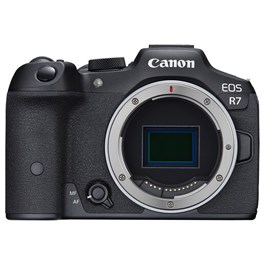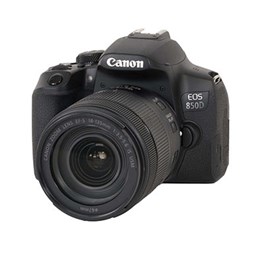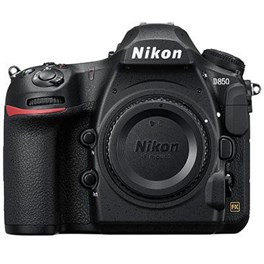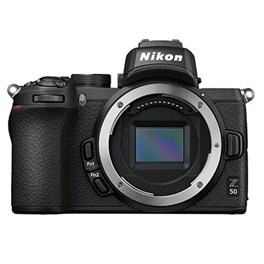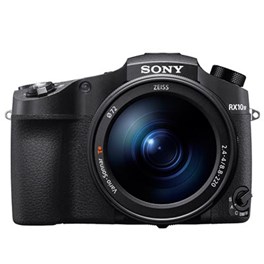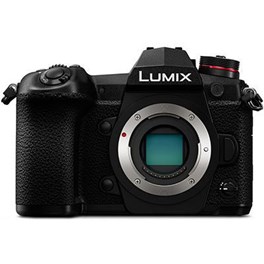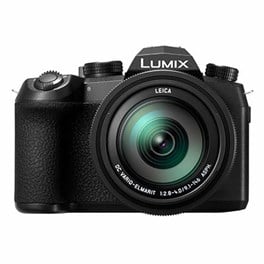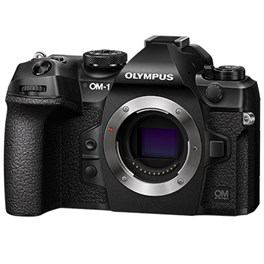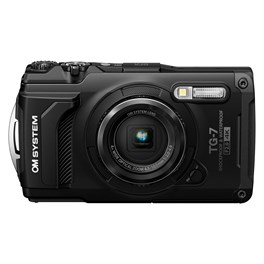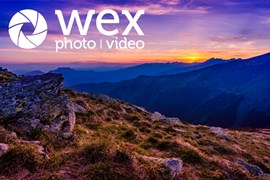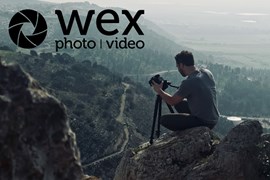
Welcome to our guide to the best wildlife photography cameras. Here, we’re counting off all the models from the major manufacturers that are going to help you capture incredible images of wild animals. Wildlife photography is a challenging pursuit, but also can be incredibly rewarding, and we’ve picked out the best cameras to help you do it.
What do you need to think about when picking a wildlife photography camera? Here is a quick précis of what we think are the key specs:
Sensor size - In many genres of photography, you basically want to get the largest sensor you can afford. However, in wildlife it’s a little less cut and dried. Sure, a big full-frame sensor will give you all the usual advantages – better dynamic range, overall better image quality, better low light performance. However, the crop factor of a smaller sensor gives you extra telephoto reach, which can be hugely helpful with shyer subjects. See our Photography Jargon Buster if any of these terms are unfamiliar.
Autofocus speed - In wildlife, your subjects aren’t going to hang around. So something that’s very important, even more important than burst rate, is having an autofocus system that can lock onto a subject quickly and reliably. Having good AF tracking is really helpful too, as it means you can keep focus on an animal even as it starts to move.
Build quality - Wildlife photography is an outdoor pursuit. This means a camera with solid weatherproofing is going to be invaluable in ensuring you can stay outside when the weather turns unpleasant – as it is known to do in the UK! Also, as you’ll be out all day, it’s useful to have a camera with long battery life and multiple memory card slots.
One last thing to bear in mind is that we’ve put together a balanced list of wildlife cameras at a range of price points. It would have been easy to fill out this list with the top-line professional cameras from every manufacturer – the Nikon Z9, Canon EOS R3, Sony A1, etc. However, most users aren’t going to be looking for these high-end models, and plus, we figure anyone who’s in the market for a Nikon Z9 probably doesn’t need a buying guide to tell them it’s good.
So, while we’ve included cameras here for a range of budgets, these are the wildlife photography models we believe are going to be suitable for the largest majority of users, including picks for those who are buying their first ever camera. We’ve picked a mix of DSLRs, mirrorless cameras and compacts, to give you plenty of options.
For more help choosing, see wildlife pro Tom Mason’s wildlife photography kit bag. And once you’ve got your camera, check out our guide to the best wildlife photography lenses.
Quick Navigation
Best Canon Camera for Wildlife
Canon’s camera range is expansive, and there are many models in it that are perfectly optimised for wildlife. Its autofocus in particular is incredibly capable – the Dual Pixel CMOS AF system has undergone several iterations and has a well-deserved reputation for speed and reliability. The cameras also boast fast burst speed, and of course, produce images that look spectacular.
Canon produces a few distinct lines of cameras, including its famous EOS DSLRs, the EOS R mirrorless cameras, the EOS M mirrorless line and its PowerShot compacts. While mirrorless cameras may grab all the attention for their speed, DSLRs remain popular among wildlife photographers for the immediacy of their optical viewfinders, and their tough bodies that are built to last.
We’ve gone through the entirety of the Canon range, and picked out the wildlife photography cameras that we feel are going to suit the largest plurality of users.
Canon EOS R7 Digital Camera Body
The EOS R7 camera continues Canon’s legacy of formidable next-generation mirrorless tech, packing precision autofocus, state-of-the-art image stabilisation and incredible speed. This RF-mount camera with an APS-C sized sensor provides the ideal balance between resolution, speed and low-light performance for a truly hybrid result that’s capable of competing with other professional full-frame models.
£1,379.00 View
Pros:
- Powerful, precise autofocus, with Bird AF mode
- Can use EF lenses with an adapter
- 30fps burst with silent shutter
Cons:
- Not many native RF-S lenses
- Limited weather-sealing
The EOS R7 brings an APS-C sensor to the EOS R mirrorless series, and does so with style. As mentioned in the intro, an APS-C sensor is smaller than full-frame – while this does have an impact on image quality, the trade-off is the 1.6x crop factor. It means that a 100mm lens mounted on the EOS R7 behaves like a 160mm lens, giving you extra telephoto reach to capture your wildlife subjects.
Elsewhere, the EOS R7 is impressively kitted out for wildlife. The Dual Pixel CMOS AF II is fast and accurate, and there’s also a Bird AF mode optimised for capturing avian subjects. Activate the electronic shutter, and you get a 30fps burst mode that’s completely silent, meaning you can nail shots of a subject without spooking them.
The EOS R7 has some weather-sealing, but it’s not as comprehensive as that on other cameras, so be careful in heavy rainfall.
Canon EOS 850D Digital SLR Camera with 18-135mm IS USM Lens
The Canon EOS 850D comes as the upgrade to the 800D. With this body you can enjoy amazing detail and clarity with excellent low-light performance. The upgraded 24.1 MP APS-C CMOS Sensor and DIGIC 8 Image Processor provides you with a quick and accurate shooting which is particularly effective thanks to the precise autofocus. This accuracy of the AF is thanks to the 45 all cross-type AF points and Dual Pixel CMOS AF. This camera is perfect for an aspiring enthusiast photographer who wants to be part of the Canon ecosystem and who wants to have unlimited creativity to express themselves. This kit comes with the versatile Canon 18-135mm IS USM Lens.
£1,299.00 View
Pros:
- Excellent battery life
- Beginner-friendly “Guided” modes
- Generously sized handgrip
Cons:
- Single UHS-I card slot
- Not fully weather sealed
If you’re someone who simply prefers the feel of a DSLR, you’ll be right at home with the EOS 850D. Its optical viewfinder and large, chunk handgrip give it a handling immediacy that’s great for the fast-paced world of wildlife photography. Plus, with the huge catalogue of EF and EF-S lenses, you’ll never be short on pin-sharp glass.
Once again, we have the exceptional Dual Pixel phase-detection autofocus system doing a lot of heavy lifting for us – only this time, it’s in a camera with a battery rated to 800 shots (when using the viewfinder rather than live view). That’s plenty for a long day’s shooting, and makes the EOS 850D a great choice for excursions into natural habitats.
One thing to be aware of is that the EOS 850D only has one SD card slot, and it is the slower UHS-I type. A high-speed, large-capacity UHS-I card should still be more than capable of keeping up, but it’s something to be aware of all the same.
Best Nikon Camera for Wildlife
Nikon’s tough, reliable DSLRs have long been a favourite for many wildlife photographers. Whether you go full-frame or APS-C (or, as Nikon would have it, FX or DX), there are loads of choices for you in this area, and a huge catalogue of F-mount lenses to go with them.
But don’t sleep on mirrorless! Nikon’s Z-mount mirrorless range is full of ultra-fast, high-quality cameras that will capture pristine images of wildlife. And once again, you can pick up an FTZ adapter to use F-mount lenses on Z-mount bodies with full functionality of autofocus and stabilisation.
In our Nikon wildlife camera selections, we’ve struck a balance between DSLR and mirrorless, and full-frame and APS-C sensors, in order to give you the broadest suite of options we can. So, without further ado, these are the best Nikon cameras for wildlife you can buy.
Nikon D850 Digital SLR Camera Body
Save £250, was £3249
Introducing, the Nikon D850, a photographic workhorse that has been equipped with a huge 45.7 megapixel sensor that will not disappoint. The 45.7 megapixel back-illuminated, full-frame CMOS sensor and extended battery life will keep up with all any photographic adventure you can throw its way, from the studio photo shoots to the remotest places on Earth. The tough and rugged magnesium-alloy build and all-weather sealing allow you to take its power wherever you want to go. The stunning image quality and impressive performance of this camera makes it the ultimate choice and will continue to be a game changer for years to come.
£2,799.00 View
Pros:
- Tough magnesium-alloy build
- High-resolution full-frame sensor
- Dedicated autofocus processor
Cons:
- Limited buffer in full-res RAW
- Focusing slower in Live View
The Nikon D850 is, frankly, a gorgeous camera. It’s one you could photograph wildlife on for the rest of your life and want for nothing. The build is tough and fully weather-sealed, constructed from a solid magnesium alloy that makes it feel like a tank. And of course, as it’s a DSLR, you get a beautiful optical viewfinder for unparalleled immediacy and immersion in your shooting. The autofocus system of the D850 is also a thing of beauty, thanks in part to the dedicated AF processor.
Shooting at a resolution of 45.7MP, the Nikon D850 can capture exceptional 14-bit RAW files at up to 7fps (or 9fps with a battery grip), which is hugely impressive when dealing with images of such quality. The shot buffer isn’t huge – topping out at 51, which you’ll only get if you have the absolute best SD or XQD cards loaded in, but it should be enough for most situations.
Nikon Z50 Digital Camera Body
Introducing the Nikon's first DX-format mirrorless camera: The Nikon Z50. A welcome addition to the Nikon mirrorless family, the Nikon Z50 comes as an affordable bridge between beginners to enthusiast consumer camera systems. Inheriting features and inspiration from the successful Nikon Z6 and Z7 cameras, including the Nikon Z mount and the impressively fast and wide Hybrid autofocus system; the Z50 features a large 20.9 megapixel DX CMOS sensor and a powerful EXPEED 6 Image Processor. The power of the sensor and processor, coupled up with Intelligent Eye-Detection AF and 209 AF points across the frame allows for edge-to-edge sharpness and detail in your photos and videos. Capable of 4K/UHD recordings at 30p and 20 in-camera effects, this camera offers a whole host of creativity and versatility.
£899.00 View
Pros:
- Slim and lightweight
- Deep, tactile handgrip
- Great images with high dynamic range
Cons:
- Low battery life
- Only one SD card slot
The first APS-C camera to join the Z system, the Nikon Z50 is a pleasingly slender shooter that won’t weigh you down too much on a long day’s shoot. While it weighs just 395g body-only, Nikon has included a deep handgrip which means it doesn’t have the handling problems of some smaller cameras. Image quality from the 20.9MP sensor is also excellent, with dynamic range that punches above its weight for a camera of this type.
With an intelligent, 209-point autofocus system, the Z50 will keep up even with tricky moving subjects. It’s got a high-resolution viewfinder, and a large, tilting LCD screen, giving you plenty of options when it comes to composition. One thing to note is that the battery life is a little slim compared to other cameras, rated to just 300 shots, so if you’re planning a long shoot it may be worth packing a spare Nikon EN-EL25.
Best Sony Camera for Wildlife
We could have filled a whole list with the best Sony cameras for wildlife. As you can imagine, it’s been a challenge to narrow it down to just a handful! With full-frame and APS-C mirrorless cameras, as well as Cyber-shot compacts, the Sony range includes cameras for a broad swathe of shooters, and plenty of them have feature sets that make them well-suited for capturing images of wild animals.
The mirrorless Alpha cameras use E-mount and FE-mount lenses. Sony got a considerable headstart on some other brands when developing its full-frame mirrorless cameras, so the E-mount lens range is hugely well-populated. Sony also opens up its mounts to third-party lens manufacturers to give plenty of choice, and also tends to keep older camera models in production for longer than others. All this means you have a lot of choice when it comes to Sony cameras for wildlife!
Sony A7 III Digital Camera Body
The Sony A7 III Digital Camera Body is the third iteration in the game-changing Sony A7 range. It comes upgraded with a back-illuminated 24.2-megapixel Full-Frame Exmor R CMOS imaging sensor, and the reinvented BIONZ X processing engine. The camera facilitates 4K HDR video capture and comes with 15-stops of dynamic range. Furthermore, it is capable of shooting 10fps, offers a fantastic ISO from 100-51200 as well as 5-axis image stabilisation all in a stylish, compact mirrorless system camera body.
£1,699.00 View
Pros:
- Gorgeous full-frame quality
- Fast, silent AF/AE tracking
- Excellent high-ISO performance
Cons:
- Can be unbalanced with bigger lenses
- Menus can be hard to navigate
This isn’t the newest camera in the Alpha system, or even in its specific range – the Sony A7 IV has since come along. However, Sony has kept the Alpha 7 III in production and available because it still offers a tremendous full-frame shooting experience, and is significantly more affordable than the premium A7 IV. If you’re looking for an entry-point into the Alpha 7 full-frame system, this is what we’d recommend.
But why’s it so good for wildlife photographers? Well, let’s count it off – you’ve got a silent autofocus system that was class-leading at the time and still excellent today, with 93 phase-detection, and 425 contrast-detection AF points. You can shoot at 10fps with AF/AE tracking, and use the rear touchscreen to select focus point. Plus, the full-frame sensor delivers exceptional image quality, even at the higher ISO settings, making the A7 III one of the best low-light cameras you can buy.
Sony Cyber-Shot RX10 IV Digital Camera
£200 Cashback
The Sony Cyber-Shot RX10 is the 4th iteration of Sony's widely popular RX10 series. It boasts an industry leading autofocus speed of just 0.03 seconds, a fixed Zeiss Vario-Sonnar T* 24-600mm lens, and 4K internal video recording. All of that and the the RX10 IV also packs a powerful 20.1MP 1.0-type sensor. Fast processing speeds also allow for the camera to achieve 24fps continuous shooting and super slow-motion up to 1000fps. The RX10 IV really do have a full arsenal of features!
£1,499.00 View
Pros:
- Lightning-fast autofocus
- High-quality Zeiss zoom lens
- 24fps shooting
Cons:
- Smaller 1-inch sensor
- Quite a hefty proposition
Sony’s impressive bridge camera, the Cyber-shot RX10 IV, is tailor-made to be a self-contained package for wildlife photographers. Welded to the front is a high-quality, Zeiss-made 24-600mm f/2.4-4 lens, capable of capturing pin-sharp images in resplendent detail. This is partnered up with a camera body that can acquire autofocus on a subject in as little as 0.03sec, and shoot at speeds as fast as 24fps. The AF tracking is great too, able to concentrate AF points around a moving subject for greater accuracy. There’s no danger of missing the moment with an arsenal like that at your disposal.
Not being able to change the lens won’t be everyone’s cup of tea, and with a bridge camera like the RX10 IV, you do have to accept the limitation of a smaller 1-inch sensor. Otherwise, this is an incredibly well-specced package for wildlife photography.
Best Panasonic Camera for Wildlife
Once again, this was a hard one to narrow down. A list of the best Panasonic cameras for wildlife could include full-frame mirrorless cameras, Micro Four Thirds mirrorless cameras, or a huge range of compacts that spans everything from pocketable travel cameras to hefty bridge cameras.
Panasonic cameras are known for their class-leading video features, and while we’re primarily discussing photography here, most have the useful 4K, 6K and 8K Photo modes. These allow you to extract high-resolution stills from video footage, effectively giving you a 30fps or 60fps burst mode to play with, depending on the video frame rate.
Elsewhere, there’s plenty more to get excited about. Panasonic has been in the mirrorless game longer than anyone else, and has refined the design of its cameras extensively over the years. With high-quality viewfinders, streamlined ergonomics and tough construction, they’re some of the best in the business. Here, we’ve picked out what we reckon are the best Panasonic Lumix cameras for the majority of wildlife shooters.
Panasonic Lumix G9 Digital Camera Body
The Panasonic Lumix G9 is the flagship model designed for photographers that need the highest quality and speed possible. At the heart of the G9 is a powerful 20.3 megapixel sensor and the Venus processing engine. There's also 5-axis image stabilisation in the shape of Lumix's Dual I.S II system which facilitates the camera's 80MP mode in JPEG and RAW, as well as burst shooting at 20fps. Other useful features included include dual SD card slots, a 6K photo mode, and 4K60p video.
£949.00 View
Pros:
- Hardy magnesium-alloy body
- Dual UHS-II card slots
- High-res electronic viewfinder
Cons:
- ISO maxes out at 25,600
- Limitations of smaller MFT sensor
A proper outdoor camera, the Panasonic Lumix G9 is constructed of a hard-wearing magnesium alloy, and is built to be weather-sealed. If you need speed, the Lumix G9 has you covered – you can burst-shoot with the mechanical shutter at 9fps, or switch to the electronic shutter for 20fps, or activate the 4K Photo mode for an effective 60fps burst rate. Dual UHS-II SD card slots ensure that you’ll get it all recorded too, with space to spare.
The Micro Four Thirds format means a smaller sensor, which can factor into image quality – though the crop factor effectively doubles the focal length of your lenses, which is quite welcome for wildlife. Autofocus speed can get as fast as 0.04sec, and battery life is solid enough for a good day’s shooting. We also like the fully articulating touchscreen, for composing at unusual angles. It rounds out what is already an eminently fully featured package for wildlife photographers.
Panasonic LUMIX DC-FZ1000 II Digital Camera
The Lumix FZ1000 II is a powerful and versatile bridge camera, capable of high-quality photography as well as 4K video. Featuring an impressive 25-400mm LEICA F2.8-4.0 DC lens, sitting in front of a 20MP 1" sensor, powered by Lumix's Venus engine, the FZ1000 II can handle almost anything you can throw at it. A free angle 1240K dot adorns the rear of the camera, providing pristine optical feedback.
£749.00 View
Pros:
- Great colour-accuracy and general image quality
- Versatile, programmable controls
- Useful silent shutter
Cons:
- Shorter lens than RX10 IV
- Max aperture drops quickly to f4
A big-lens bridge camera like the Sony RX10 IV, the Panasonic Lumix FZ1000 II is a choice for the more budget-conscious, and still impresses with image quality and versatility. We especially like the number of customisable controls it offers – with 13 function buttons, this is an easy camera to set up exactly the way you want it. Also, handily, it can charge via USB – useful if you need to lob a bit of power into it while taking a lunch break.
Image quality is generally excellent, with Panasonic’s impressively accurate colour science taking centre-stage. The 25-400mm equivalent Leica-made zoom lens acquits itself well – there’s maybe a little softness at the long end, but that’s to be expected with superzoom lenses, and it’s not enough to seriously compromise image quality. Autofocus is fast, and you can activate a 12fps burst mode if needed to make sure you don’t miss the moment.
Best Fujifilm Camera for Wildlife
Fujifilm may not be the first name people think of when it comes to wildlife, but the firm has quietly gone about building up a formidable stable of mirrorless models that are actually somewhat perfect for the discipline. The best Fujifilm cameras for wildlife are going to come from the X-mount mirrorless range – with high-quality APS-C sensors, durable bodies, and access to an incredibly sharp lens range, they offer a feature-set that’s tough to argue with.
Fujifilm had a banner year in 2022, releasing a trio of premium cameras that show off just how capable APS-C models can be. We’ve picked our favourite of the recent crop for wildlife, but have also found space for a more affordable option for those who might just be starting on their Fujifilm journey. Whichever you choose, however, you’ll be opting for one of the smartest, most capable and downright coolest camera systems around.
Fujifilm X-H2S Digital Camera Body
The X-H2S is a powerful storytelling tool that combines high-end photographic and filmmaking features for full creative freedom. With a 26.1MP BSI X-Trans 5 stacked sensor and X-Processor 5, the X-H2S delivers an outstanding 14-stop dynamic range. For motion professionals, this camera also offers a wealth of recording options, including 6.2K 30P, and up to 7-stops of in-body image stabilisation.
£2,499.00 View
Pros:
- Incredible dynamic range and low-light performance
- Subject-recognition autofocus
- Blistering 40fps shooting speeds
Cons:
- Fewer control dials than X-T series
- Rivals have better AF
The Fujifilm X-H2S is the new speedster of the X-mount stable. Capable of shooting at up to 40fps with its electronic shutter, it uses a 26.1MP BSI X-Trans 5 sensor with a stacked design for ultra-fast readout. What’s more, as it’s a recent camera, it gets some of the latest fashionable features built-in – most notably, AI-powered subject-detection autofocus that can intelligently recognise what it needs to lock onto (including, yes, birds and wildlife).
Fans of Fujifilm’s retro-styled X-T series may be a little disappointed with the design of the X-H2S, which eschews most of the control dials in favour of a smoother top plate. But internally, there’s nothing to complain about here, with the sensor capable of achieving an exceptional 14 stops of dynamic range. There’s also a class-leading image stabilisation system, which provides up to seven stops of effective compensation for hand-held camera shake.
Pros:
- Small and portable body
- Effective 5-axis stabilisation
- Charges via USB
Cons:
- You’ll get better AF tracking elsewhere
- Battery life is middling
Considering its small size and competitive price, the Fujifilm X-S10 sports a surprisingly generous 26.1MP of resolution on its APS-C X Trans CMOS 4 sensor. Images look great, with those gorgeous JPEG colours that Fujifilm has become famous for, and lots of smart design decisions have been made inside and out. We like that the X-S10 is small enough to operate one-handed, and that complex features like the X-T4’s image stabilisation system have been slimmed down enough to make this possible.
The body is magnesium-alloy, so you get a reasonably rugged build that’ll withstand outdoor use – though be aware it’s not fully weather-sealed. A nice and large grip gives you plenty of stability when using the camera hand-held, even if you’re using one of the larger X-mount lenses. Once again, it’s the kind of camera where you might want to pack an extra battery, as the X-S10 does drain fast – though having USB charging does help mitigate this somewhat.
Best OM-System Camera for Wildlife
The rebirth of the Olympus brand as OM System has already seen the introduction of cameras that are absolutely perfect for wildlife photographers. With some of the finest weather-sealing we’ve ever seen on a mirrorless camera, as well as preternaturally capable subject-detection autofocus, the newer OM cameras quite simply get the job done. Plus, they’re still Micro Four Thirds cameras, so they don’t have the limited-lens problem that can plague new systems until they find their feet.
Of course, Olympus-made cameras are still widely available and well worth picking up for any wildlife photographer. In addition to the mirrorless OM-D cameras, Olympus also produced some of the best tough compacts around in the form of its Tough TG series. We’ve included one here in case your wildlife aspirations include underwater fauna – it’s probably the best underwater camera you can buy right now.
OM SYSTEM OM-1 Digital Camera Body
The flagship OM SYSTEM OM-1 is a revolutionary Micro Four Thirds camera that features next-generation technology. Delivering high image quality that goes beyond the expectation of the sensor size, the OM-1 benefits from computational technology, autofocus and sequential shooting performance that far surpasses conventional models, and dramatically improves basic functionality.
£1,384.00 View
Pros:
- IP53-rated weather sealing
- 7.5-stop stabilisation
- Subject-recognition autofocus
Cons:
- 20MP is somewhat low
- No CFExpress card slot
The new flagship, the OM SYSTEM OM-1 is a hell of a fully featured camera. It’s got IP53 weather sealing, which makes it one of the toughest interchangeable-lens cameras out there, and means you’re more than protected from even torrential British downpours. Furthermore, you get a 7.5-stop image stabilisation system to essentially eliminate image blur when shooting handheld. Plus, the autofocus boasts sophisticated subject-recognition software that’s particularly good with birds and other wildlife.
A burst rate of 50fps with C-AF is incredibly impressive. Some might have preferred a CFExpress card slot to keep up with this, rather than relying solely on UHS-II SD, but that probably makes sense for a camera at this price point. Unless you strongly feel that 20MP is not enough resolution for your imaging (i.e. if you plan to make very large prints of your images, or feel you may need to crop in extensively), then there’s no reason not to consider the OM-1.
OM SYSTEM Tough TG-7 Digital Camera - Black
Venture further, dive deeper, and unveil more detail with OM SYSTEM’s Tough TG-7 12MP digital camera. Lightweight, compact, and rugged enough for outdoor enthusiasts, the TG-7 is waterproof to an impressive depth of 15m, shockproof to 2.1m, crushproof up to 100kg, and freezeproof at -10°C. It also boasts 4K video, an f2 wide 25-100mm 4x optical zoom lens, and a 12-megapixel backlit CMOS sensor.
£499.00 View
Pros:
- Ultra-tough, waterproof body
- Underwater shooting modes
- 4K underwater video with popular formats
Cons:
- Small 1/2.3-inch sensor
- Not worth it if you’re not going underwater
For underwater wildlife photography, a tough compact is going to be your best friend, and the most capable one for our money was the Olympus Tough TG-6. No longer is that true, for its predecessor, the TG-7 offers all the benefits of the TG-6 with a suite of tasty upgrades.
Waterproof down to depths of 15m, it’s the ideal choice of camera for snorkelling and capturing images of the marine life you encounter. It’s one of the few tough compacts to come sporting a zoom lens – a 25-100mm equivalent, to be specific – and it also has a maximum aperture of f2, which is handy when light gets low (and underwater, it does so very quickly).
Shockproof, dustproof and freezeproof, the Tough TG-7 can take just about anything life throws at it. And in this iteration, you can capture a 4K footage of those adventures!
Now, the sensor, like the TG-6, is smaller than you’ll find in other cameras – a 1/2.3-inch type, similar to that you’d find in a smartphone. Many will take issue with this but the versatility of the camera makes up for that. We particularly like the 22 pre-set Scene Modes for ease of use and self-correcting adjustments.
FAQs
What type of camera is best for wildlife photography?
While you could use more or less any camera, a DSLR or mirrorless camera with a high-resolution sensor and fast autofocus is the best option for wildlife photography.
What lens should I use for wildlife photography?
A telephoto lens with a long focal length is best for capturing close-up shots of wildlife. You can also use a teleconverter to increase the focal length. Equally, there are scenes where a wider focal range can help capture an entire scene e.g. a starling murmuration.
Should I use a tripod for wildlife photography?
A tripod can help steady the camera and reduce blur in your photos, but it can also be cumbersome and limit your mobility. A monopod or beanbag can be a good alternative.
What is the best shutter speed for wildlife photography?
A fast shutter speed (1/1000 or faster) is ideal for freezing the motion of wildlife. A slower shutter speed can be used for creative effects, such as motion blur.
Do I need to use a high ISO for wildlife photography?
Using high ISO allows you to shoot in lower light conditions, but it can also introduce noise into your photos. It's best to use the lowest ISO possible while still maintaining a fast enough shutter speed to freeze any motion.
How do we decide?
Our in-house photography experts, store staff and partners all work collaboratively to pour over these guides. The cameras and equipment recommended in our guides are based on their personal opinion, empirical experience and of course, feedback from our customers.
We way up price, features, quality and the all-important 'je ne sais quoi' to make sure we recommend products that will delight and inspire.
If you would like more advice on any purchase our contact centre staff are here to help. Alternatively, you can reach us via email or social media.
And don't forget. If you were to purchase anything based on our recommendations you'll be covered by our full returns policy
Buying Guides

